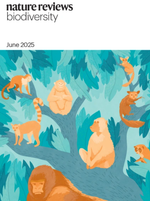PeerJ
Kumar Paudel, Amy Hinsley, Diogo Veríssimo, and Ej Milner-Gulland, Evaluating the reliability of media reports for gathering information about illegal wildlife trade seizures
View Journal Article / Working PaperIllegal wildlife trade (IWT) is threatening many species across the world. It is important to better understand the scale and characteristics of IWT to inform conservation priorities and actions. However, IWT usually takes place covertly, meaning that the data on species, trade routes and volumes is limited. This means that conservationists often have to rely on publicly available law enforcement reports of seizures as potential indicators of the magnitude and characteristics of IWT. Still, even these data may be difficult to access, leading conservationists to use media reports of seizures instead. This is the case in countries like Nepal, which have limited capacity in data keeping and reporting, and no centralized data management system. Yet reliance on media reports risks introducing further biases, which are rarely acknowledged or discussed. Here we characterize IWT in Nepal by comparing data from three sources of information on IWT between January 2005 and July 2017: seizure reports from three Nepali national daily newspapers, official seizure records for Kathmandu district, and data on additional enforcement efforts against IWT in Nepal. We found a strong positive correlation between the number of official and media-reported seizures over time, but media under-reported seizure numbers, with 78% of seizures going unreported. Seizures of charismatic, protected species were reported more often and seizure reports involving tigers were most likely to be reported (57%). Media reports appeared to be a good indicator of trends and the species being seized but not overall seizure number, with the media largely underestimating total seizure numbers. Therefore, media reports cannot be solely relied upon when it comes to informing conservation decision-making. We recommend that conservationists triangulate different data sources when using seizure data reported in the media to more rigorously characterise IWT.




